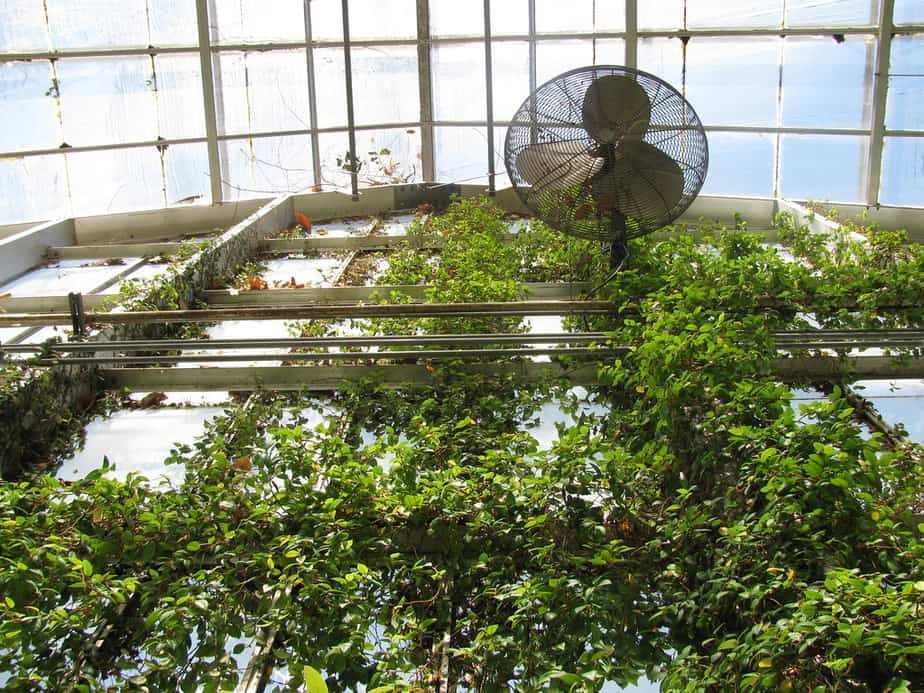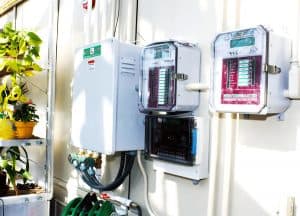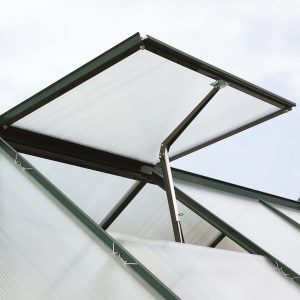So you thought you’d taken care of greenhouse ventilation when you installed vents in the frame? Think again. There are a myriad of different types of greenhouse fans to consider now – each with a specialized purpose.
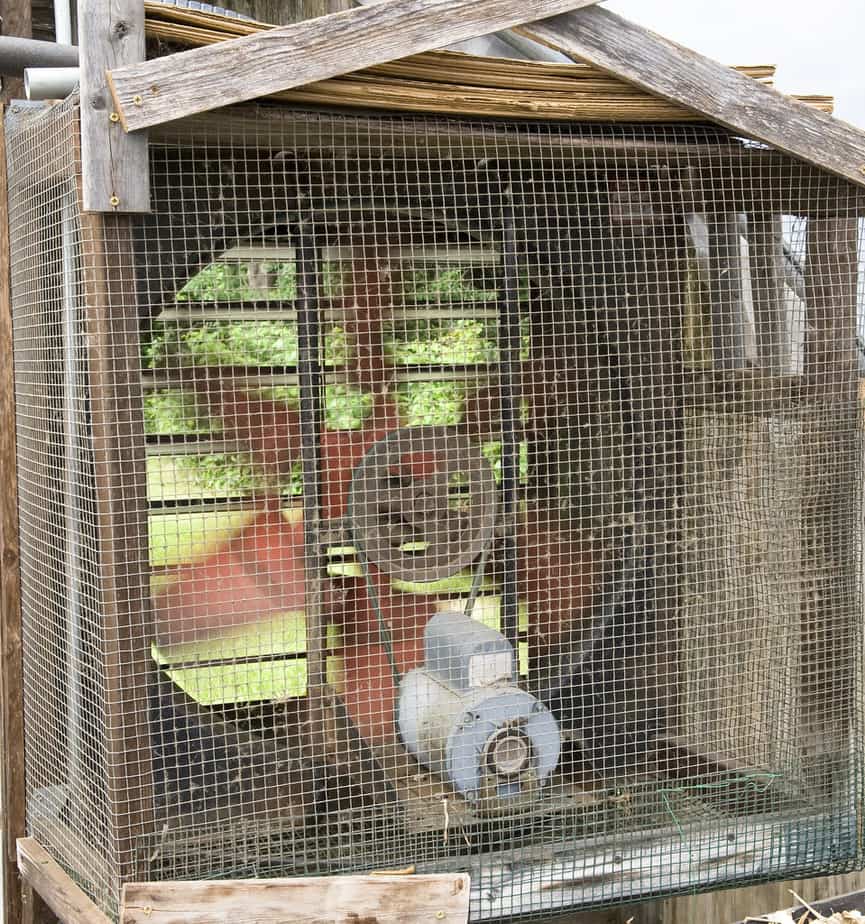
While vents are an essential part of airflow and greenhouse climate control, vents alone probably aren’t going to cut it if you want to maintain the perfect temperature and humidity all year. So, let’s get you hooked up with the right type of greenhouse fan for your needs.
Why You Need A Greenhouse Fan
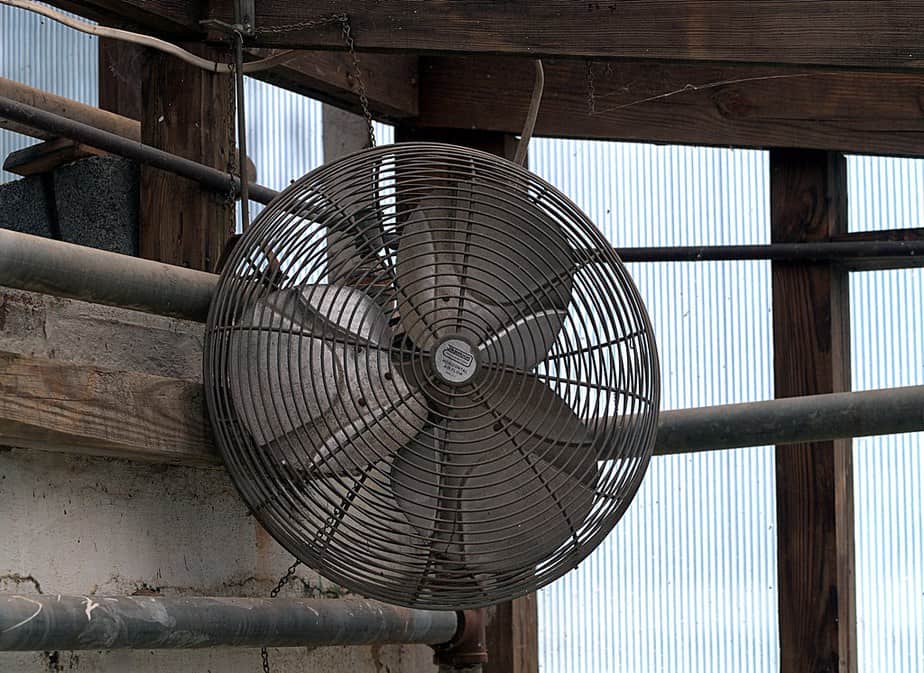
Fans will help you break up air stratification. Hot air rises. You know that! So you can expect hot air to get stuck in the top of your greenhouse, cooler air to settle down below, and these layers stay stagnant—stratified—unless you employ fans to break them up.
In addition to temperature regulation, your plants will benefit from good air circulation because it assists photosynthesis. Fresh air moving through your greenhouse brings plants the carbon dioxide they need—which means it is also important to set up your vents and fans so that all plants are getting good airflow and available carbon dioxide.
Occasional breezes also help plants grow strong and sturdy. Good greenhouse ventilation and airflow will even help pollinating plants…pollinate! The right types of greenhouse fans can seriously aid in this process.
The Different Types of Greenhouse Fans
For an in-depth look at greenhouse ventilation and climate control, check out our full article here.
All types of greenhouse fans will affect and improve:
- Air temperature
- Moisture level
- Surface condensation level
- Gas concentrations (helping plants to feed on CO2)
- Dust, pathogen, and pest levels
- Plant hardiness
Exhaust Fan
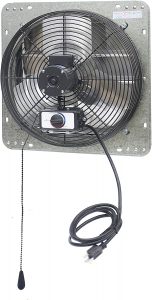
Perhaps the most popular kind of fan, exhaust fans work by creating a pressure differential between inside the greenhouse and the outside world.
Exhaust fans don’t work alone: they function in conjunction with shutters or vents placed on the opposite side of a greenhouse. As warm air is pulled out of the greenhouse through the exhaust fan, the negative pressure inside the house pulls new air in through vents on the opposing side of the structure. Ahh, a nice, fresh breeze!
Exhaust fans are fantastic at decreasing humidity, too.
Exhaust fans look like a big metal box with slats on the outside and a fan inside. Good-quality exhaust fans come with speed controllers so that you can adjust for your greenhouse size, plant needs, and climate.
Circulation Fan
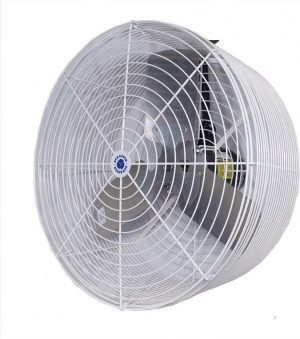
Circulation fans are those huge, metal-caged fans you’re probably used to seeing in commercial greenhouses. They can be mounted on ceiling rafters, frame posts, or even set on the floor.
While circulation fans come in varying sizes and typically have a speed adjuster, they are less “nimble” than exhaust fans. Circulation fans are the bulldozer of greenhouse fans. They just blow—that’s all they know how to do.
But the benefit of a circulation fan is that it can provide a more “flexible” airflow pattern than a cross-breeze – similarly to an exhaust fan. That means you could place a circulation fan in a particular spot in your greenhouse that tends to get extra-hot, too cold, or too moist. They are perfect for getting air moving in tricky places and corners, breaking up air stratification.
Be careful when using circulation fans in addition to exhaust fans: circulation fans can mess with your carefully constructed exhaust-vent cross-breeze, as well as the natural airflow from greenhouse windows and vents. The best placement of circulation fans is in a zig-zag pattern.
If the air at the floor of your greenhouse tends to get stagnant or too wet, you may want a circulation floor fan. Ceiling-mounted circulation fans – like the image above – can get a little more pricey, but that’s what you’ll want if you’re utilizing circulation fans for all your greenhouse airflow needs.
Solar-Powered Fan
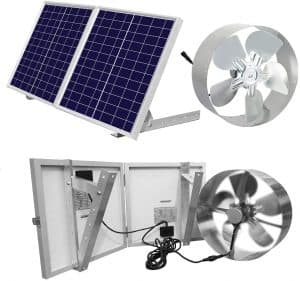
Just like any other solar-powered appliance, solar fans harvest energy from the sun throughout the day to power themselves. Pretty much any type of fan can be hooked up to a photovoltaic panel to become a solar-powered fan, but you’ll see many exhaust fans for greenhouses marketed with solar power connection. So, different types of greenhouse fans can be solar powered.
Ready to design your own fully solar-powered greenhouse? Read our complete guide here.
Fan and Pad Evaporative Cooling
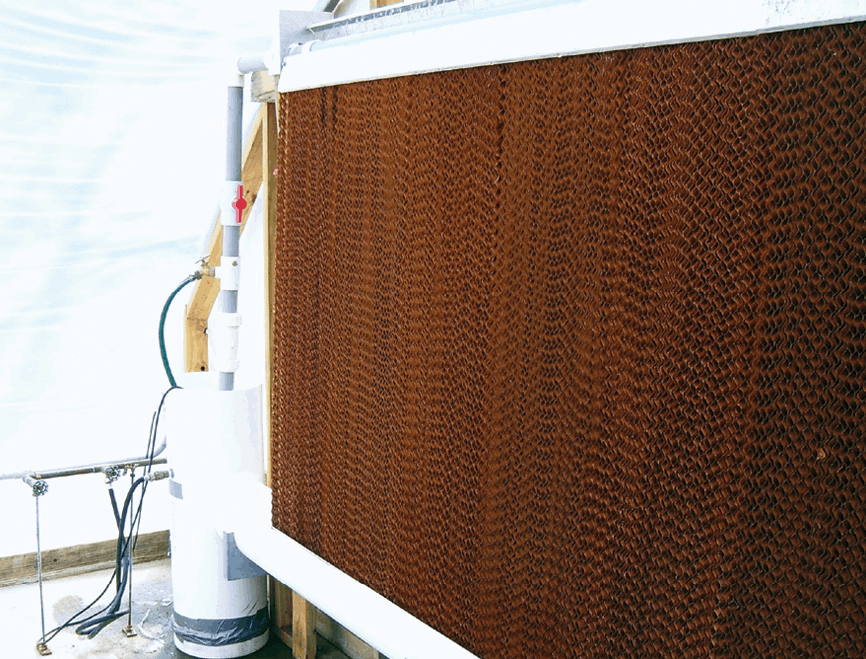
Evaporative cooling uses the heat in the air to evaporate water, which cools the greenhouse. Through evaporation, hot air is transformed into a cool breeze for your greenhouse!
A fan and pad combo is the most common evaporation cooling system: fans draw air through wet pads that extend the length of one endwall or sidewall. As the water evaporates due to the hot air, cool air is expelled into the greenhouse.
It’s just like the way your body cools itself with sweat! But please don’t use sweat in your evaporative cooling system. Water should be clean.
Evaporative cooling systems lower the temperature and increase the humidity in the greenhouse, so they are best used in hot, dry climates. Some greenhouse keepers even use a mister to shoot water into the fan intake unit to increase effectiveness.
Evaporative coolers are very powerful, environmentally efficient, and comparatively affordable.
Fanjet
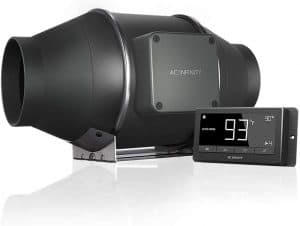
What the heck is a fanjet?
Not to be confused with a “turbofan,” which also sometimes goes by the same name (and is the “fan” on an airplane), a fanjet can be used to control airflow, dehumidification, and even heating.
A fanjet uses a motorized shutter, exhaust fans, and specially designed tubes to regulate airflow. The fanjet provides continuous and evenly distributed airflow.
This is a complex system that not many hobbyist greenhouse growers use, but can be wildly helpful for bigger greenhouses.
Thermostat Fan
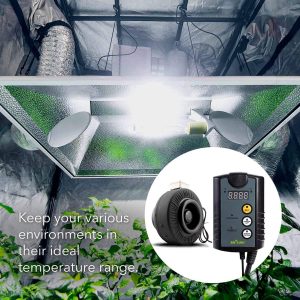
Ready to go all-out with your greenhouse tech? Get yourself a thermostat with that fan!
Just like an automatic vent opener, a thermostat fan will automatically turn on or off depending on a pre-set temperature. Utilizing a thermostat-connected fan will increase your greenhouse’s energy efficiency, lower your electricity bills, and give you peace-of-mind.
Choosing A Greenhouse Fan System
Look at these factors to begin choosing which fan is right for you:
- Type of greenhouse
- Greenhouse size
- Energy needs and efficiency
- Plant needs
- Outdoor climate
- Your own mechanical skills
Whichever you choose, be sure to research how to best set up your fans to maximize a healthy airflow throughout your greenhouse. Your plants will thank you!

